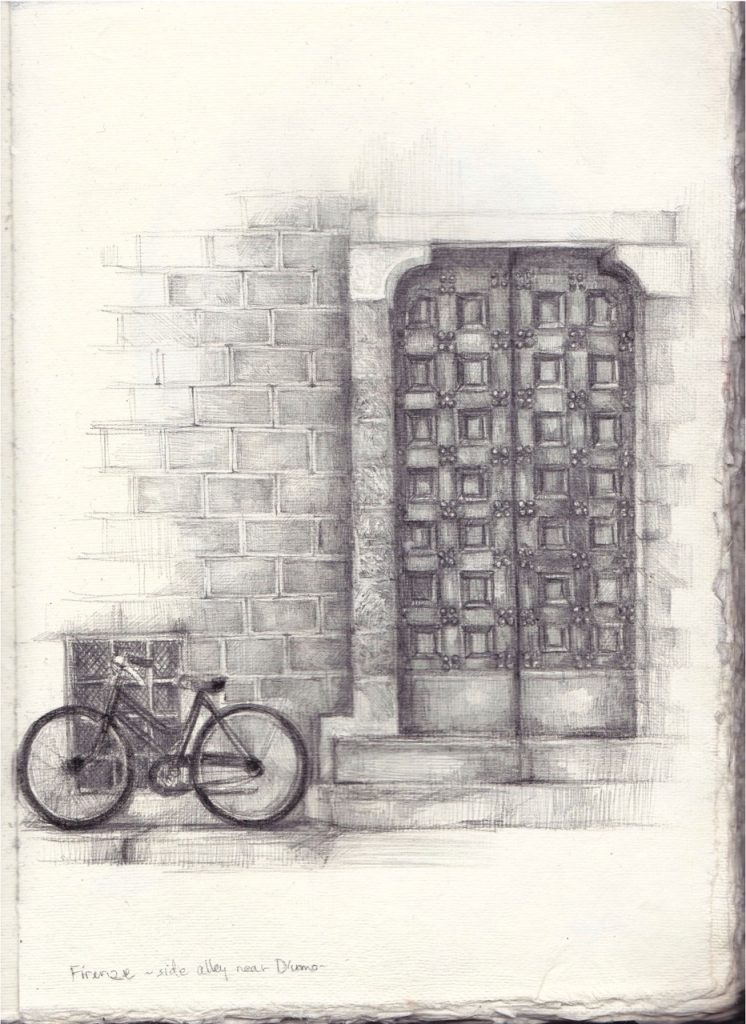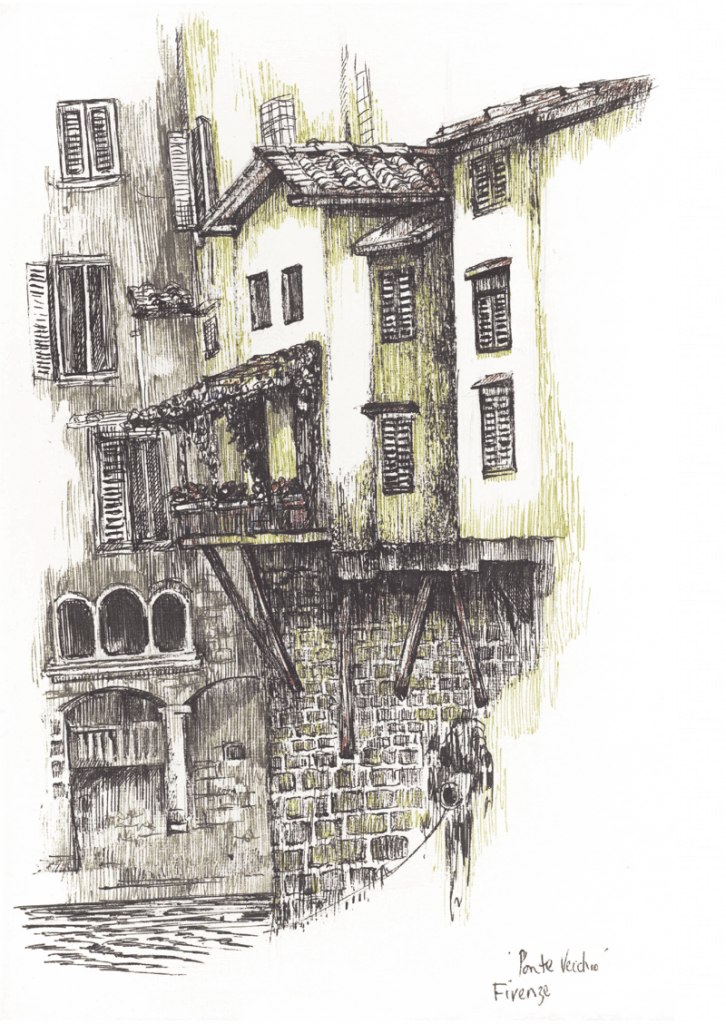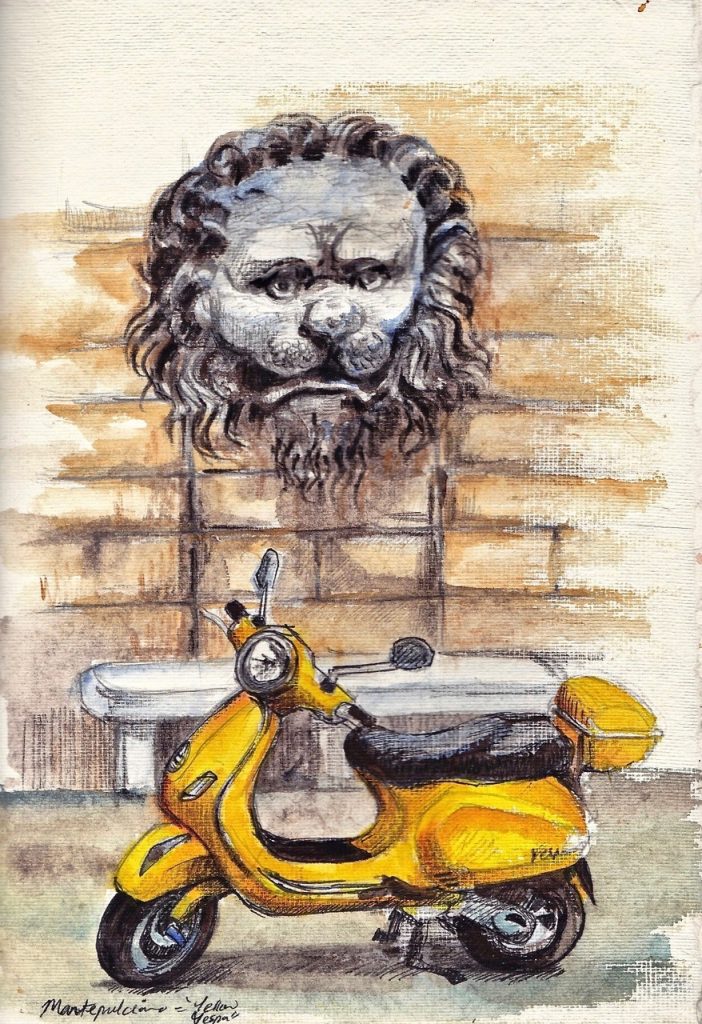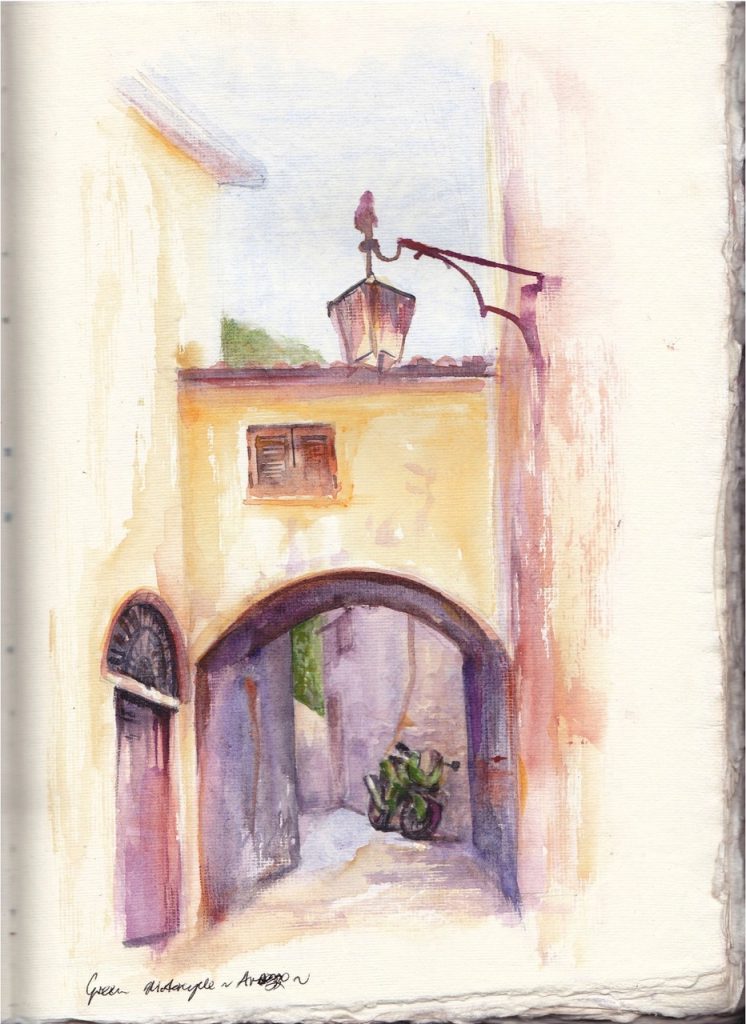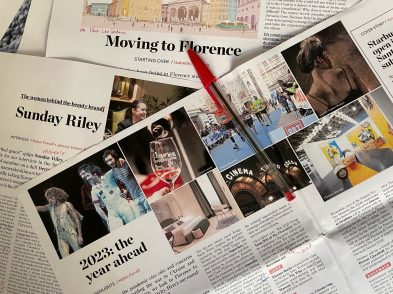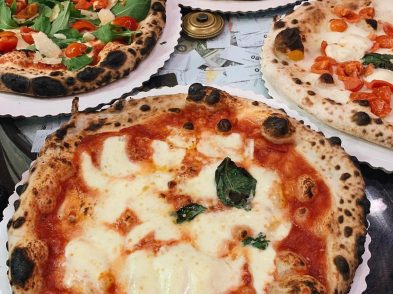Nafisa is an award-winning artist from Sydney who recently published a book entitled Tuscan Temptations, made up of 90 intimate drawings of Tuscany and the stories behind them. Dividing her time between her home and her apartment in Florence, she is able to pursue her love of art in two very different environments, without being a stranger in either.
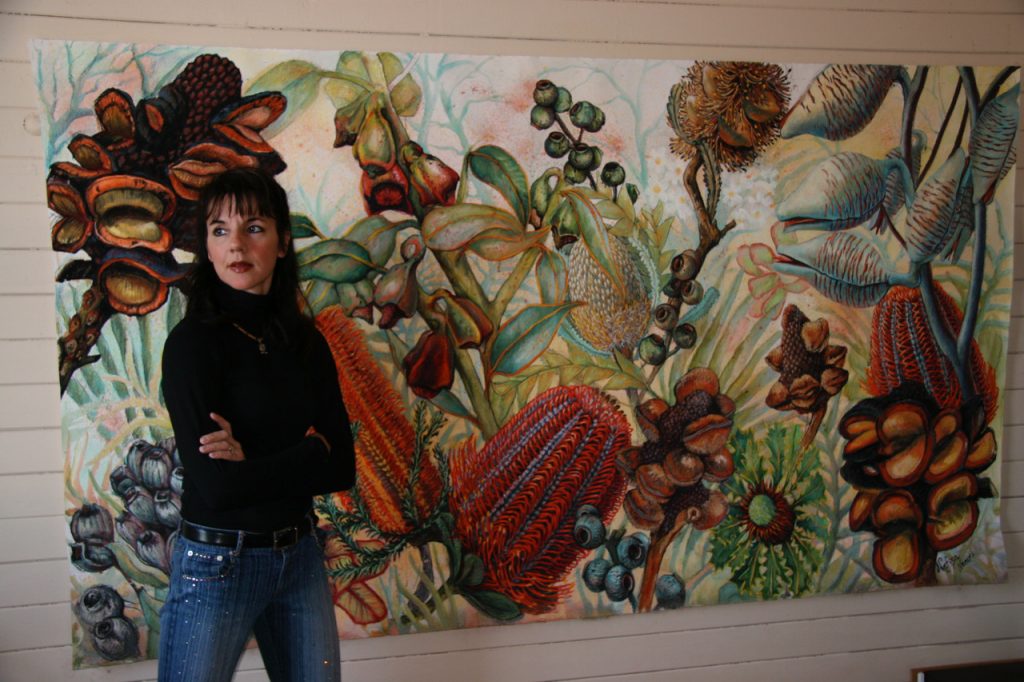
Can you talk me through your first visit to Florence?
I had the opportunity to visit Florence for the first time in 2001. It was an experience I’ll never forget because I wandered around the streets alone and lost myself in the city. It really caught me because I’d studied the renaissance period and loved it—the academia, arts and sciences all coming together in a burst of humanity. Also, compared to the 21st century, where the arts have lost so much support, that period where artists were exalted for their skill, dedication and ability really resonates. I have always aspired to the Old Masters’ commitment; they weren’t just practising one discipline, they spread themselves right across sculpture, architecture, painting, drawing: all the visual arts. Looking around Florence in 2001, all that history just made me want to keep coming back. The city became my space, so coming back now I feel completely at home in Florence, more so than anywhere else on the planet.
When did art become a part of your life?
I have been drawing since I was young, encouraged unintentionally by my parents because we travelled a lot. My mum would give me a drawing book and that would keep my mind and hands busy. At school, I used to draw constantly. I think it was a gift. I have a very analytical eye, so I would always have very close observations. I wanted to pick up details that might be missed in a normal glance. In my artworks with wildflowers, I work on specimens with magnifying glasses to reveal what cannot necessarily be seen with the naked eye.
How does that attention to detail relate to your book Tuscan Temptations?
When walking around the streets of Tuscany, my eye is searching for things that are not necessarily picked up on by tourists. They might be strolling through the streets focusing on what their tour guide is saying, so I like to record those things that are more intimate. I showed my book to a friend of mine and his mother, who lives near the city, said straightaway, “You’ve captured the soul of Florence”. Something resonated with her. It wasn’t just things that a tourist would pick up, but something that resonated with people that have lived there and have known Florence all their lives.
What is so special about drawing Florence?
Every time I sit and spend hours drawing something, I absorb myself into that location, and it means that when I look back, I can relive the moment and experience it. When we take beautiful images on our phones or cameras, it’s very difficult to go back into that time because you only spent a minute there. When I draw, I spend hours there, so I’m experiencing sights, smells and sounds.
I read in your book that people were generally supportive in those moments.
Yes, it was quite refreshing because in places like Sydney, people clamber around you and stand at your shoulder. They want to be involved in the process of capturing something. But in Italy, I’ve found that people are used to it and they know to leave an artist alone when they’re working. I’d hear some compliments, but they were whispered. I wouldn’t have people literally breathing down my neck. If anything, I’d be offered an extra cup of coffee in a café I’d be sitting at.
At what stage during your visits to Florence did you decide that you were going to turn your drawings into a book?
I’d always do drawings when I was visiting, and in 2010 I did a five-week course at the Florence Art Academy. I bought a blank drawing journal with beautiful soft paper, and I thought, Since I’m here for 5 weeks on my own, I’ll draw. I’d sit on stone walls and draw places around Florence, then on the weekends I hired a motorbike to ride out to other cities in Tuscany. I would stop and draw whenever my legs got too tired to carry me any further. It wasn’t meant to be released as a book, but by the time I came close to completing the journal, I showed a couple of friends in Sydney, including the minister for arts at that time, Peter Collins. He suggested making it into a publication and writing a beautiful narrative to record what these places meant to me.

What was the process like when producing the book?
During Covid, I turned my attention to recreating the original journal as a replica. It was released initially in Australia in March 2021, but we’ve just had it printed here in Italy by Lego Spa. I tracked them down because I admired the quality of their work and their ability to capture artists’ colours. We worked side by side for a good year and went to print in August, so now there’s a limited-edition of 1,000 books, of which 500 are in Florence and 500 are being shipped to Sydney. I was very picky. I wanted to publish it in Italy, the country it was inspired by. It cost more, but I got to choose the eggshell colour of the paper, so it has that antique feel, and the hand-torn edge is significant because it’s rarely done by book manufacturers. I had it all hand-finished. The spine is faux leather and the cover is a beautiful linen, so it has that real sense of the old important volumes. It’s timeless with the embossed lettering and a silk ribbon marker. It was important for me that when holding the book, it feels like you’ve got something precious.
Are there any drawings in the book that have a particularly special place in your heart?
I think my fondest is one of the Ponte Vecchio that I went back several times to finish. It captured all the detail and you can feel the amount of time I spent on it. I think it captures so much. So much history occurred on that bridge; it has seen love and disaster, families walking across it, trades changing hands across it, and floods that almost destroyed it. And the drawing is so immediate. With pen and ink you can’t use an eraser. You have one shot.
Is there anything else you would like to add?
The one thing I would love to express is that the book was meant to be a personal journal. People who read it are looking into my personal life, getting 90 drawings celebrating Florence and Tuscany in the way a local would like to have expressed it. I really wanted to capture what was at the heart of places and not the overproduced touristy images. In most cases, I’ve noted where the places are, so people can go on a tour of self-discovery and find them, because they will never disappear. That’s the beauty and the significance of them: it’s like time has stood still. I hope people visit and I hope that it touches them in the same way that it touched me.
Readers of The Florentine will receive a special gift of a gold-framed unique miniature print from the book on buying a copy of Tuscan Temptations from Avery Perfume Gallery (borgo degli Albizi 70), Florence (055 2466733).

